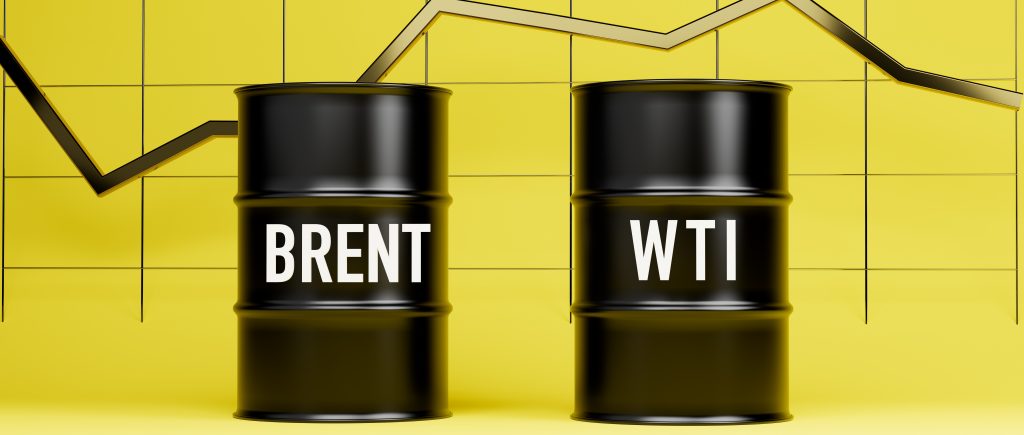Crude oil prices saw a noticeable surge, with the price of West Texas Intermediate crude exceeding the $80 per barrel barrier, Brent oil rose to more than $84.19 per barrel, while energy markets are closely watching recent developments in particular OPEC and its allies’ actions within the framework of OPEC +, In this comprehensive analysis, let’s review the main factors pushing oil prices up right now.
Current oil prices are mainly influenced by supply and demand dynamics, central bank policies, and geopolitical concerns. These variables are expected to continue to affect the energy market as the US presidential election approaches, so energy investors are advised to follow new events and stay informed about their potential impact.
OPEC+, oil production lags
Oil markets have stabilized as a result of voluntary restrictions imposed by OPEC and its allies on oil production. Since the third quarter of 2023, oil production has been cut by 2.2 million barrels per day. The aim was to prevent global oil production from exceeding global demand levels. As the virtual OPEC meeting on June 2 approaches, just a few days ahead, market observers expect this voluntary cut in oil production to continue.
Global demand dip
Contrary to preliminary projections, global crude oil demand did not rise as strongly as expected in 2024. Supply constraints combined with a slow economic recovery and recovery from the effects of COVID-19 have contributed to some balance and there is an opportunity for experts to point out that global oil production will exceed economies’ ability to consume it, pushing oil prices higher and the complex overlap between supply and demand continues to be a critical element in this equation.
US crude oil supply
Crude oil production in the United States remains a concern. Prices may be affected if supply continues to exceed demand due to surplus. Weekly reports on crude oil supply and the number of barrels from the Energy Information Administration (EIA) and the American Petroleum Institute (API) are widely monitored by investors. The number of barrels higher than expected in API’s recent data indicates continued growth in supply until 2024.
Important indicators
Important information about key petroleum products and oil refinery activities can be found in the American Petroleum Institute’s weekly crude oil inventory report. These factors significantly affect market mood and can lead to price changes. In addition, the start of the US summer driving season has led to higher enthusiasm in the market as many head to the roads for their holidays and travel, the demand for oil is expected to increase.
Impact of interest rates
Changes in crude oil prices are heavily influenced by interest rate dynamics. Here’s an overview of how this happened:
Reverse relationship: Historically, there has been a reverse relationship between oil prices and interest rates. The cost of borrowing rises when interest rates rise, which can reduce the pace of economic activity growth. Low oil demand contributes to lowering prices. On the other hand, low interest rates usually encourage economic expansion, increasing oil demand and pushing its prices upward.
US Dollar Effect: US Dollar is used globally for oil pricing. The weaker US dollar makes oil relatively cheaper for buyers in other currencies, increasing demand and pushing prices higher. Conversely, a stronger dollar could rein in oil prices.
OPEC + Meeting Forecast: Traders and analysts expect the current oil production cut to extend during the upcoming OPEC + Group virtual meeting with a sensitive balance that supports prices without suppressing economic recovery. It should be noted that Brent crude prices ranged in the range of $80 per barrel and OPEC + aims to maintain them within the range between $80 and $90.
Geopolitical pressures:
Russian-Ukrainian conflict: Recent missile attacks from Russia on Ukraine and Russia’s plans to expand its border in the Baltic Sea have raised many concerns about crude oil supplies. Any interruption in oil production or transportation due to geopolitical tensions could lead to higher prices.
OPEC + Virtual Conference: OPEC members and other oil-producing countries have decided to hold a virtual conference instead of meeting in person and although this event may not lead to major statements, it contributes to widespread market uncertainty.
Fed’s Stance: The US Federal Reserve frustrated hopes for an early 2024 rate cut, boosting crude oil demand, pushing prices higher and investors had previously expected a rate cut, but the Reserve’s current position has changed expectations.
US Dollar Index (DXY):
The DXY index, which measures the value of the dollar against a basket of other currencies, is approaching the level of 105.00 and positive US PMI data for May indicates continued economic growth and as liquidity returns to the dollar, oil prices rise.
Durable Goods Data:
The downward data of previous durable goods orders estimates suggest a higher likelihood of lower interest rates in September, despite a tendency to tighten monetary policy by the Federal Reserve and this expectation further affects oil prices.
Mexico’s oil production decreased:
Mexican oil production in April was about 6.4% lower than the previous year. This translates into a decline of about 1.56 million barrels per day. The decline in oil production affects overall supply and contributes to volatile prices.
Risk appetite:
Investors’ appetite for risk has renewed, especially after Fed officials bristled at interest rate cuts hopes in June and markets are now putting a slight chance of a rate cut by the Federal Open Market Committee in September, down sharply from previous expectations.
Significant implications for other factors
Inflation: Higher oil prices can increase inflation, with higher transport and oil production costs and this can slow economic growth, as consumers have lower income that can be spent on other goods and services.
Economic uncertainty: geopolitical tensions create uncertainty, affecting investment decisions and overall economic stability, especially in the Middle East, a source of significant quantities of oil.
Consumer impact: Higher oil prices can directly affect consumers through higher fuel costs, affecting families’ budgets.
 Noor Trends News, Technical Analysis, Educational Tools and Recommendations
Noor Trends News, Technical Analysis, Educational Tools and Recommendations





